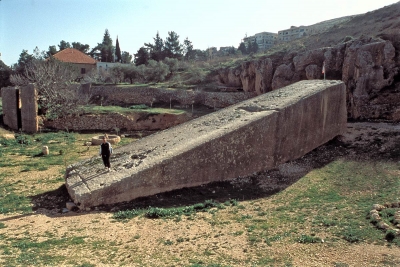
In the lush green valley of Bekaa, about 79 km from Beirut, the capital of Lebanon, stand the ruins of once-resplendent Roman temples. The city of Baalbek was built in Phoenician times and it was dedicated to Baal the sun god. Later, the Greeks renamed it Heliopolis or the City of the Sun. In 47 B.C., Julius Caesar made Baalbek a Roman colony, the beginning of its golden age.
Over a span of 200 years, starting from the 1st century A.D., a succession of Roman emperors supervised the construction of temples in honour of the popular Roman deities, Jupiter, Venus and Mercury, as well as the god of wine Bacchus. All the temples were built on a raised platform giving a breathtaking view of the surrounding countryside. Earthquakes destroyed much of Baalbek till it was re-discovered and restored in the 19th century. Today, a few Corinthian pillars, the colonnaded entrance and some sculptures and staircases are all that remain.
When archaeologists dug up the site, they found part of a massive stone wall containing three of the largest cut blocks of stone in the world. Named the Trilithon, each of the three stones would be as tall as a six-storey house if stood on end. It would be extremely difficult even with the most modern industrial cranes available today, to transport and place such large stones in a horizontal position. How did the Romans achieve such a stupendous task, not seen on this scale anywhere else in their vast empire?
The largest stone measures 19 x 4 x 3.5 metres and weighs some 800 tons. The quarry is more than a kilometer away, from where each block was transported to Baalbek, lifted up 7.5 metres and placed precisely on top of a platform of smaller stones. So precisely in fact, that it is impossible to insert the blade of a knife between the joints! Some people believed that it must have been built by the devil himself. Others believe that a supernatural or extra-terrestrial force was at work.
Another block of stone weighing about 1000 tons lies unused in the quarry. That it was too heavy for the people, who transported the Trilithion, is an explanation that doesn’t quite satisfy.
Picture Credit : Google
